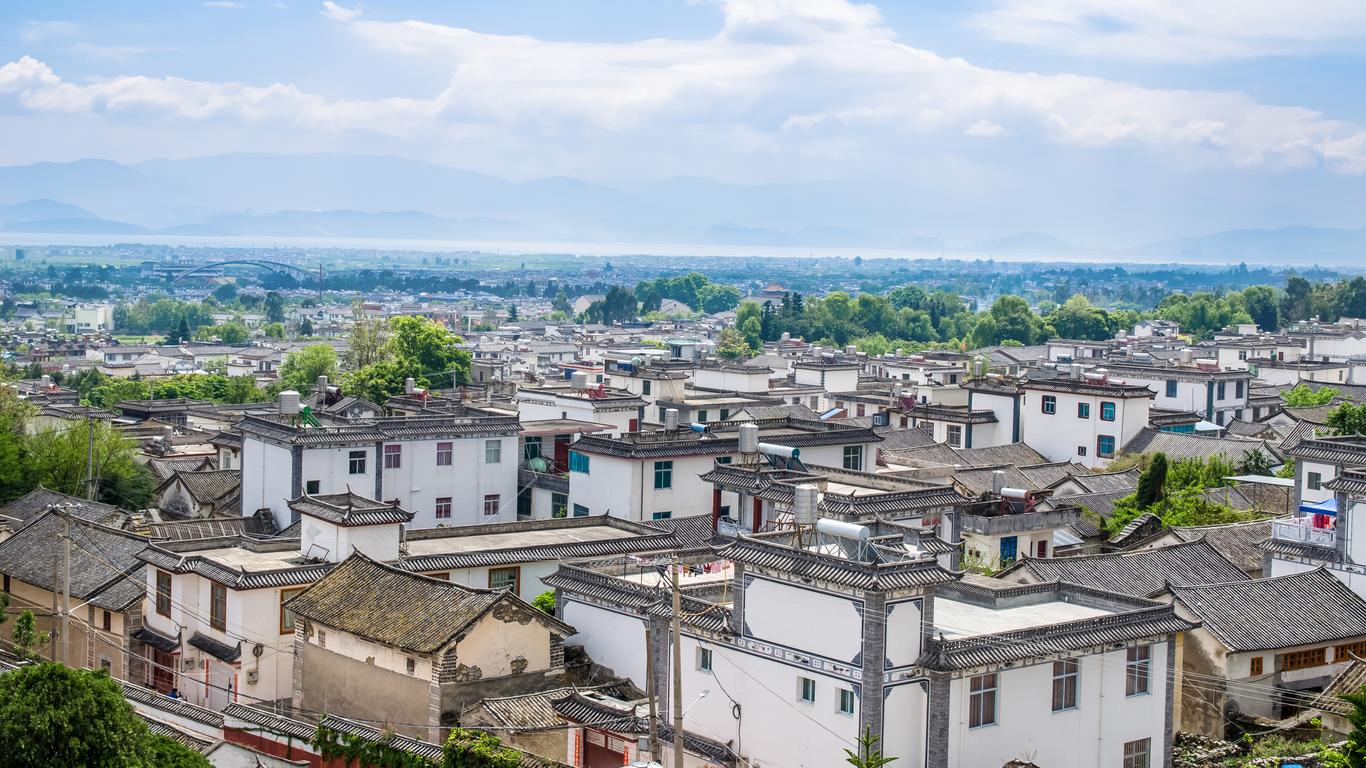Dozens of perfect postcard images radiate from Dali, a charming town surrounded by mesmerising nature in the Chinese province of Yunnan. Temples dot the slopes of Cangshan Mountain and pagodas dominate the skyline, as traditional architecture celebrates the enchantment of yesteryear, while markets and gardens help create Dali’s benign atmosphere. Combining both outdoor activities and ancient cultural attractions, Dali has long been one of the major visitor destinations in southwestern China. However, it’s not purely a tourist city or museum piece. Visit Dali, and there’s a real sense of exploring a city that’s mostly untouched by time.
Dali has two very different sides. Almost all visitors gain their first impressions from Dali New City, a modern and flashy concoction of streets that look much like any other city in China. Dali Old City is the main area for visitors to explore, where temples and cobblestone streets exude the superlatives. Trinkets can be found in atmospheric souvenir stores, dozens of cafes provide a serene space to watch the world pass by, and every angle offers an intimate insight into a time when Dali was one of the world’s largest cities back in the 11th century. There are hundreds of heritage buildings in a distinguishing Bai style, from private houses to museums and galleries.
Most visitors combine Dali Old City with at least one day in the Cangshan Mountains that overlook the town. These can be accessed on hiking trails or cable car routes that start from Dali New city. Over a dozen small villages surround Dali and can be reached on a bicycle, with those along Erhai Lake offering another iconic day trip. Dali Airport has domestic connections to various major Chinese cities. There are regular buses and trains to Dali from Yunnan’s capital, Kunming. After a beautiful journey through the mountains, these trains arrive in the New Town, where it’s a short taxi ride to Dali Old City, where most visitors enter through the towering city gate.
Dali’s evocative history started with its role as the first capital of the Nanzhao Kingdom, which spread from Burma and introduced Buddhism to the region. It was 200 years before Dali was conquered by the Mongol Empire in the 12th century.





